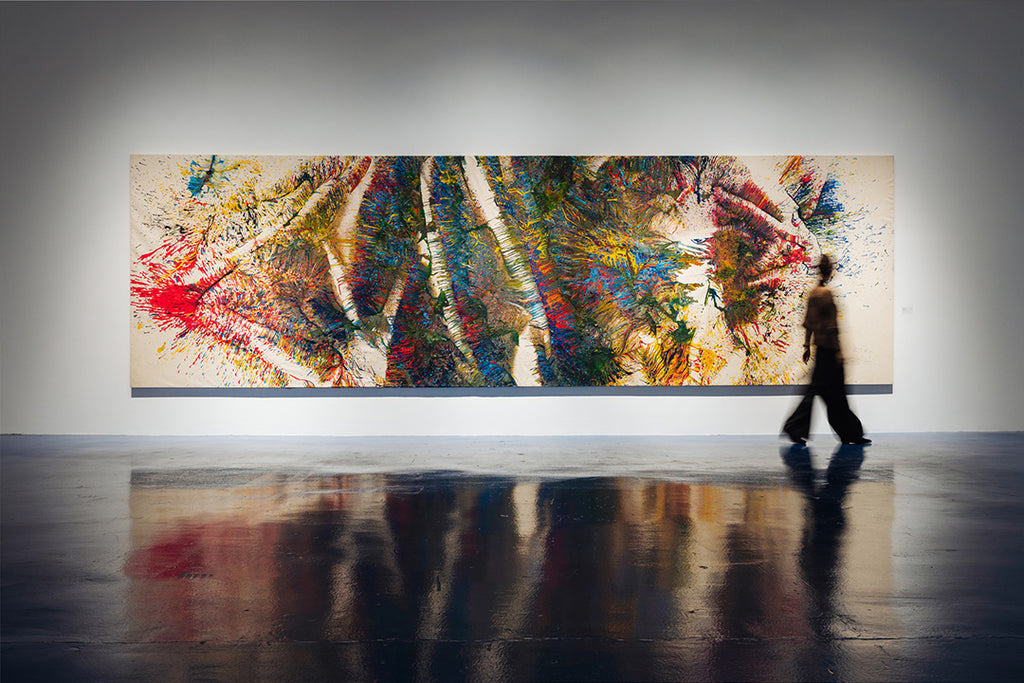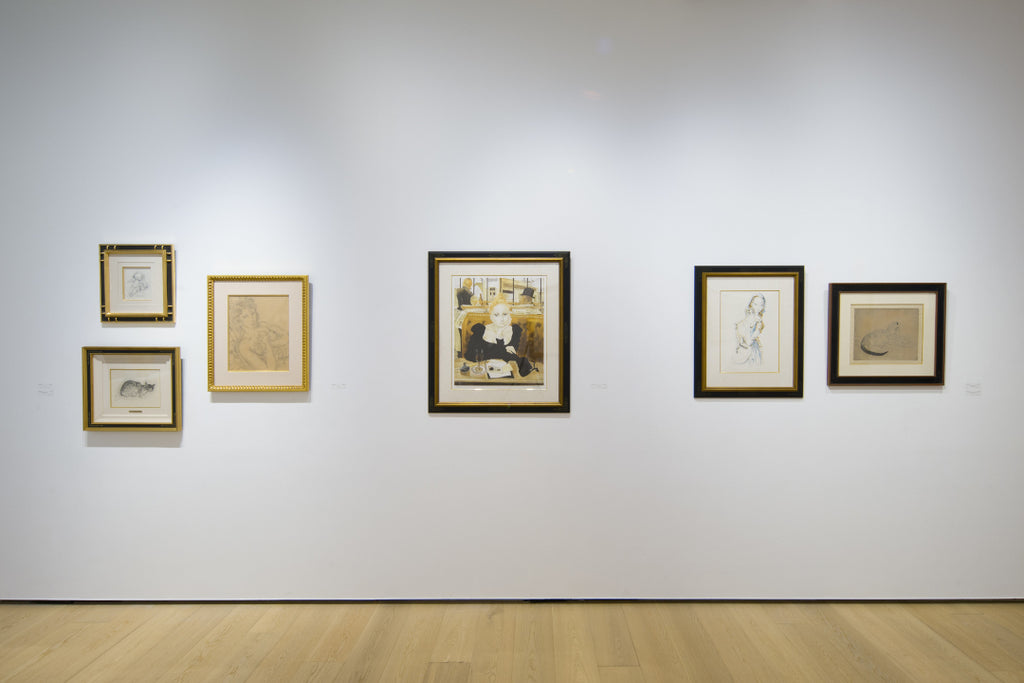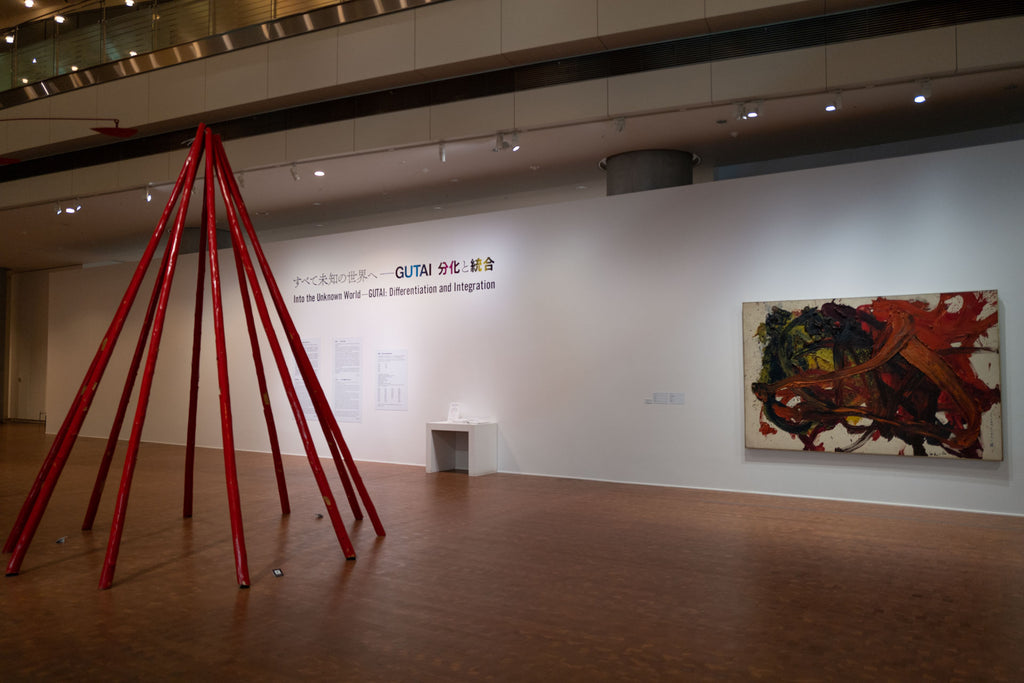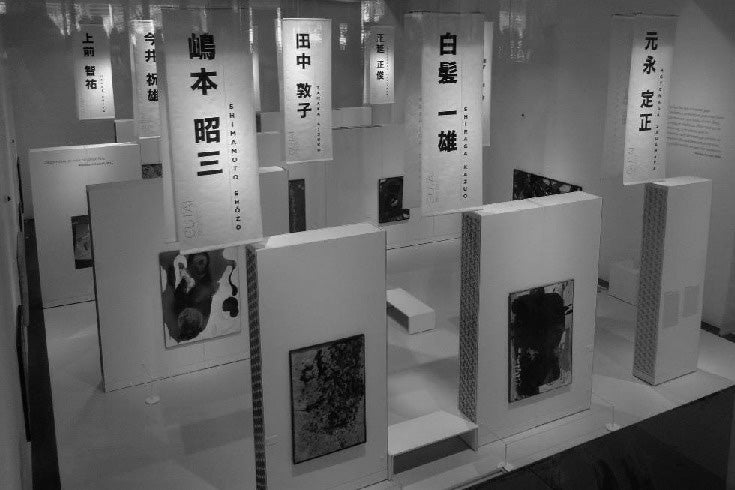ARTICLES
Artist Tsuruko Yamazaki's Atelier Interview
GUTAI STILL ALIVE 2015 vol.1
07/35

Untitled, 12-16/60, Lacquer, dye and aluminium, 17.5 x 15.5 cm
A project evolving the digitized archive of the book, “GUTAI STILL ALIVE 2015 vol.1”.The seventh edition features an interview with Tsuruko Yamazaki, a founding member of the Gutai Art Association. In her studio in Ashiya City, which has close ties with the Gutai, Yamazaki reminisces about her encounter with Jiro Yoshihara (founder of the association) and her desire to create new works in her own words.
Artist Tsuruko Yamazaki's Atelier Interview
Tsuruko Yamazaki sits in her studio with a 1m square tin plate laid out alongside an assortment of pigments and thinner. Even now at the age of 88 she is still actively producing work. She talks of quietly waiting for a certain urge to overtake her before she can begin her work. As she is overpowered by this force she rapidly produces piece after piece, with many fans eagerly awaiting her new productions.
Calling upon Yamazaki’s studio in Ashiya, Hyogo we learn of the central position of Jiro Yoshihara in instigating what has proved to be 60 years of art production. She begins to talk of Yoshihara in the days before Gutai when he was still presenting work with the avant-garde group of artists Nika-kai.
The Gutai group was first established in 1954, but Yamazaki first met Yoshihara 7 years prior to this in 1947, long before any other Gutai members. Having originally enjoyed painting Yamazaki was drawn one day by a flyer for a painting class, and upon joining she came to encounter Jiro Yoshihara.
Tsuruko Yamazaki: If he was still living I think the oldest member of the Gutai group would have been Yozo Ukita, but now it is me. I was just 22 then in 1947 when I came across a hand written flyer advertising a “Painting Class” on the telegraph pole (laughs). And so I went along with one of my friends and it was there that I met Yoshihara. At that time he was working with the Nika-kai and also running this class. I really enjoyed painting and was adamant that I wanted Yoshihara to teach me, but in fact my background was in Noh theater, as my family were engaged in this performance. My mother also played the shamisen and valued traditional Japanese aesthetics. For that reason I was told that I couldn’t study oil painting, but after pleading with them they finally agreed. At the time there was a local sports hall and public ground close to the house and one day I met Yoshihara there by chance. As I was walking home I saw him playing in a baseball match between the Ashiya doctors and the Ashiya artists associations. Yoshihara was pitching. He noticed me and stood up. He said “Oh you live nearby do you? You couldn’t get me some tea could you?” and so I hurried home to fetch some tea for him. That was how things were.
In 1947 not even two years had passed since the end of WWII. At that time Yoshihara was leader of the Kansai section of the Nika-kai art group, and was involved in the establishment of the Japan Avant-Garde Art Club and various other local movements around Ashiya city. Yoshihara was running a painting class and it was here that Yamazaki first met with him, yet this painting class was a far cry from the pioneering work of Gutai.
Tsuruko Yamazaki: For quite some time we would just place some apples and other fruit together and draw, together with other girls in the area. One time I drew my sister with an azalea necklace but when I showed it to Yoshihara he said bitingly “Is this any different from an 18th century painting? What are thinking?” and then I burst into tears but he didn’t even batter an eyelid he just watched as tears ran down my face. It really made me feel terrible. Then he had a lot of work on for the Nika-kai exhibition so the classes stopped for a while. Once the show had started I saw a report in the paper and noted with a start that Yoshihara had called his new work “Face of Falling Tears”. When I saw that I thought “That’s me!” I had been upset and cried before him but Yoshihara and seen that and made a work out of it, I was really surprised. But of course he never said he had painted me.
Perhaps it may be said that Yamazaki’s refusal to give in despite painful experiences and diligently continue the painting classes that led to her involvement in the founding of Gutai. After a short time Yamazaki went on to meet another founding member, Shozo Shimamoto.
Tsuruko Yamazaki: While I was attending the painting class Shimamoto appeared and Yoshihara approached me about a new artist group saying “I want you to join too”. That was to be origins of Gutai. At that time there was only Chiyu Uemae and Yoshio Sekine(1922-1989), but that was the start. Then there was a suggestion to invite the members of Zero Kai, Kazuo Shiraga(1924-2008), Saburo Murakami(1925-1996) and Akira Kanayama(1924-2006). Shiraga’s group were good at debating and drinking but they hadn’t shown any work yet. Shimamoto took his own work along to one of the Zero Kai meetings. As a result they agreed to merge with Yoshihara’s group and so we all gathered at Yoshihara’s house for a meeting. There was a lot of discussion about what we should call the group, but Yoshihara didn’t like any of the suggestions. Then Shimamoto mentioned “Well there’s always the word 'Gutai'.” Yoshihara stopped and exclaimed “Ah! That’s it…we need to make ideas concrete (gutai), let’s go for it” and so it was decided.
The Gutai group was formed in 1954 and in July of the following year they joined “The Experimental Outdoor Exhibition of Modern Art to Challenge the Midsummer Sun” in Ashiya park and in October the first Gutai exhibition was presented at Tokyo’s Ohara Kaikan Hall.
Tsuruko Yamazaki: For the first exhibition in Tokyo I put my collection of yellow painted cans in a cardboard box and took them to the gallery, but I wasn’t sure what Yoshihara would say when it came to setting up. I felt like I was smuggling in my work somehow. But when I took my chances and removed the work from the boxes he said “They will look quite interesting all lined up together” and I was so pleased. I also brought my stripe painting as I was worried how he would react to the cans which I had never shown him before.
Although it started in representational work, what I sensed from Yoshihara’s work was his pursuit of free imagination. In my can and 2D work I used metal which no one else in Gutai was doing. That idea came from seeing the beauty of light reflections from a taxi window at night. At that time Ashiya was a dark area with no street lights so when we passed an advertising sign it really lit up and seemed to float amongst the dark, and I really sensed the beauty of this phenomenon. I also used tin and mirror but they all came from this idea. I experimented in painting these materials but with ordinary paint I couldn’t achieve this translucency so I started to use dyes and thinner.
Tsuruko Yamazaki used tin plate as a material for her work, transitioning forward and back between painting on canvas to metal work. Her first work presented with the Gutai group, shown as part of the “…Midsummer Sun” show, was the sculpture “Not a Triple Mirror ”, which has become recognized as one of her major pieces, being featured in the 1993 Venice Biennale, and at 21st Century Museum of Contemporary Art, Kanazawa in 2007. Further more her red tent work has also been selected for show in the permanent collection of a Brazilian art museum, and was also recreated for the Guggenheim exhibition, with this piece also appearing in the “…Midsummer Sun” exhibition.
It is quite a feat to present one of your most renowned works in the very first exhibition the Gutai members joined. At that time the tin plate she was working with was very thin, flexible and not well finished. But as these early pieces have been recreated for museum shows she comments “My work was really more ephemeral but as it is remade it has such a solidity that it is as if it is someone else’s work.” And now such work is held in museum collections around the world.
Just 8 years after seeing the flyer for the painting class in 1947, Tsuruko Yamazaki was to be part of a new art movement, and following this she moved from metal works, to works on canvas, to pop art paintings, developing a wide range of expressions on an international scale and now again returning to work with metal.
Tsuruko Yamazaki: I am very fast at making work. But if I don’t have the desire, the craving to make something it is no good. My work doesn’t come from a pressure to produce, if I don’t hit upon that something, that particular sense of shock then I fail to move.
Even now she is preparing a 1m square tin plate and dye in the studio. As she shows her works around the studio she tells of how when she enters her production mode she hides herself away in the studio and completely devotes herself to making art, continuing her pursuit of the beauty of light and color.
(Mothly Gallery, November 2013)
Read more about the “Gutai Art Association »
*Information in this article is at the time of publication.



